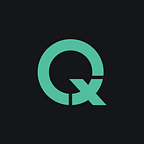Python Philosophy
While most of the companies, in the early 2010s, were looking for Java, JavaScript, or C++ developers, our university decided to start with Python, as our first programming language. “We don’t want our students to give up.” was the answer to “Why Python?”
One of the challenges of the teachers is making studying fun, keeping students motivated, and helping them manage frustration, nervousness, and stress.
When it comes to computer programming, you need to talk to a creature who has no feelings, may be obstinate or rude. Computers don’t care about your feelings or emotions. They don’t get the job done unless you talk to them in their strict language. They don’t tolerate the least of errors.
There is a perception that learning programming is frustrating and stressful. And that’s right, at least before Guido van Rossum decided to create Python (:P) in the late 80s, a programming language meant to be fun, easy to learn, teach, use and understand. A language that prioritizes humans over computers, their time over computer’s time, human feelings over the computer’s stubbornness.
While you may know python as a large snake, the name of the Python programming language comes from an old BBC television comedy sketch series called Monty Python’s Flying Circus.
Earlier in time, a programmer’s responsibility was to write code for computers. If the computer understands your code, and it is fast, your goal is achieved. That’s because a computer would cost more than a lot of developers.
Van Rossum prioritizes humans over machines, by emphasizing respect for other developers and their time. “You primarily write your code to communicate with other coders, and, to a lesser extent, to impose your will on the computer,” he says.
“There are a whole bunch of common programming tasks that are easy in Python,” says Van Rossum. “For someone who is not yet a programmer, who wants to become a programmer, for those people Python is particularly easy to get.” Indeed, many computer science schools are switching over from Java to Python, because it’s much easier to grasp for beginners.
Python was designed for readability, it has a simple syntax similar to the English language.
Half of the human brain is directly or indirectly devoted to processing visual information. At least 65 % of people are “visual learners”. Depending on this, Python relies on indentation, using whitespace, to define scope; such as the scope of loops, functions, and classes, instead of symbols such as curly brackets or semicolons (which is harder for the human brain to notice and interpret).
Lately, Python has become one of the top most popular programming languages, used for building websites, games, mobile and desktop applications.
Python is (arguably) the most popular and effective programming language when it comes to developing Artificial Intelligence.
If you are a technology enthusiast who is curious about how a computer program functions, have a good idea to implement it using programming, business and data analyst who wants to have better predictions of certain outcomes, a financial analyst who wants to build financial programs, job-seeking person, or beginners in Computer Science, Python is a good choice.
For the end, whether you are a computer programmer or not, here are some of the Zen of Python principles by Tim Peters:
- Beautiful is better than ugly.
- Explicit is better than implicit.
- Simple is better than complex.
- Complex is better than complicated.
- Flat is better than nested.
- Readability counts.
- If the implementation is hard to explain, it’s a bad idea.
- If the implementation is easy to explain, it may be a good idea.
References:
[1] https://blog.dropbox.com/topics/work-culture/-the-mind-at-work--guido-van-rossum-on-how-python-makes-thinking
[2] https://www.seyens.com/humans-are-visual-creatures/
Author: Qëndrim Krasniqi
Software Developer specialized in Python at Quantix L.L.C
